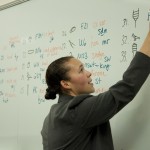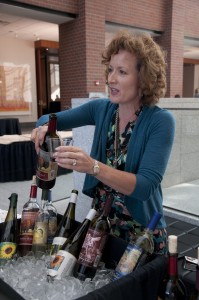By Tasha Cook
A lawsuit was filed against the college Tuesday by the Student Press Law Center (SPLC) and a current student and former Ledger employee, according to an article on SPLC’s website. The complaint claims the college attempted to charge excessive fees for public records.
The complaint centers around student Marcus Clem’s request for records of emails between Carmaletta Williams and Jason Rozelle during the college’s reexamination of its diversity program last spring. Clem joined former culture editor Rachel Kimbrough’s pursuit of open records requests early that semester.
Executive Vice President of Administrative Services Joe Sopcich was the main point of contact for the requests. According to SPLC’s website, the college said a day’s worth of emails which was requested would cost $9,745.96. Kimbrough withdrew pursuit of the matter, and Clem notified college officials he would continue to pursue the records independently of his employment with the Ledger.
“Sunshine only burns the corrupt,” Clem said. “There’s no reason for them to do this unless they are hiding something they shouldn’t be hiding. Otherwise they should have no objection to providing information that’s requested.”
Clem believes the college was trying to hide something by charging such high fees for the records, which at one point came to $47,426 for seven months’ worth of records. Clem said his objective is to have the college settle the lawsuit out of court immediately and without cost, provide the emails between Williams and Rozelle and enact a policy which would prohibit the assignment of excessive fees on documents, unless prior approval is granted by the Board of Trustees.
“Really, my personal faith, I guess not faith but just belief because faith would imply that I have faith in something pertaining to the college, and I really don’t, but my belief [is] that institutions like the college should be required to comply, unless information is being requested that is one of the specific exemptions of state law,” Clem said.
College president Terry Calaway said the college was following what state laws called. He said the college does not store everything on hard drives, but rather backed up onto a tape, and the process of having someone dig through those records and print them is an extensive job.
“To suggest that there’s something in there that we’re trying to hide is just absolutely ridiculous and irresponsible,” Calaway said.
“The college takes it responsibility very seriously to have to respond to these open records requests and we do it to the best of our ability to collect the information,” Sopcich said. “I think that’s important for everybody to realize.”
Calaway said he believes Clem did not just file the suit for legal purposes. He said Clem’s mother was terminated from her position within the Continuing Education department at the college.
“To be honest with you, my position without having looked at it is, I think it’s a personal vendetta with Marcus related to the college and his mother’s termination,” Calaway said. “I don’t think it has anything to do with anything else. His court request was related to something different. Quite frankly, that’s been our experience with him over the last couple of years.”
Calaway said he believes this has nothing to do with the Office of Diversity, Equity and Inclusion (ODEI).
“At one point Dr. Sopcich asked them what they were looking for, because originally the request was for emails on a Sunday,” he said. “Marcus’ response was they were just trying to see what our response would be to the request. That’s what caused me to say this is personal.”
Calaway said the college is not trying to hide anything because no one even read the emails. He said to this day no one knows what the requested emails say.
“The thing that’s really bad I think are the allegations that people are trying to hide something when we have no clue what would be in there anyhow because we’ve never looked at them,” he said. “I think that that’s irresponsible and that’s indicative of our experience with Marcus.”
Clem is confident in the outcome of the suit.
“We have filed suit against the college, however they have the option of contesting the suit,” he said. “Then we go to court, or the college can look at the information, decide that they don’t have a case to argue, which they really don’t. I have thought through it many times and there’s really no case to be made here. So the best thing for them to do is to meet our demands and settle out of court.”
Clem said he believes the college will accuse him of having a personal vendetta, but claims this action is really just the last resort.
“We have given them every chance in the world to comply with state law before going to the courts,” he said. “We have done everything we can. And they have been stonewall, object, block, abuse at every point. It has to stop.”
Contact Tasha Cook, managing editor, at tcook15@jccc.edu.








































